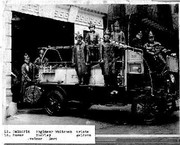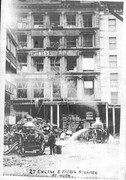You are using an out of date browser. It may not display this or other websites correctly.
You should upgrade or use an alternative browser.
You should upgrade or use an alternative browser.
FDNY and NYC Firehouses and Fire Companies - 2nd Section
- Thread starter mack
- Start date
Engine 218 firehouse 650 Hart Street Bushwick, Brooklyn 11th Division, 28th Battalion "Bushwick Bomberos"
Engine 18 BFD organized 112 Seigel Street 1877
Engine 18 BFD new firehouse 650 Hart Street 1887
Engine 18 BFD became Engine 18 FDNY 1898
Engine 18 became Engine 118 1899
Engine 118 became Engine 218 1913
Engine 218 disbanded (July 2) 1975
Engine 218 reorganized (July 4) 1975
Engineer 7 BFD organized 112 Seigel Street 1885
Engineer 7 BFD moved 55 Morgan Street at Engine 37 BFD 1896
Engineer 7 BFD became Battalion 7 FDNY 1898
Battalion 7 moved to 650 Hart Street at Engine 18 1898
Battalion 7 became Battalion 27 1898
Battalion 27 disbanded 1906
Battalion 37 organized and operated at 650 Hart Street at Engine 118 (218) 1906-1949
Battalion 60 organized 650 Hart Street at Engine 218 1970
Battalion 60 disbanded 1975
Note: Battalion 60 was organized to respond to alarms only and had no administrative responsibilities. It could be relocated where needed.
Engine 18 BFD at 112 Seigel Street:

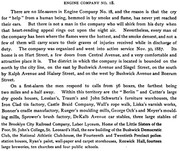
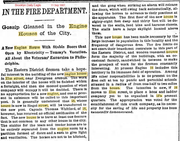

Note: Elm Street renamed Hart Street.
650 Hart Street:

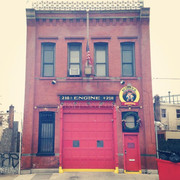

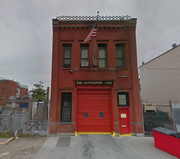

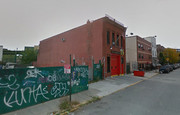
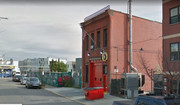

Engine 218 1936 Mack pumper:
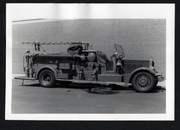
Engine 218 Mack CF pumper early 1970s:

Engine 218:
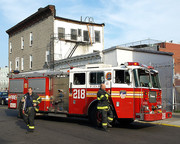

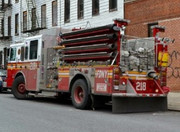
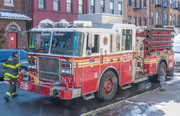
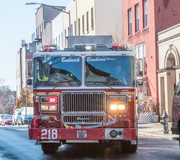
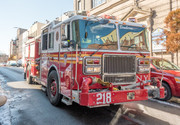
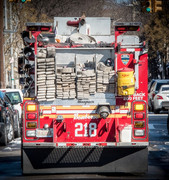
Engine 218:
https://www.youtube.com/watch?v=tsTjqRLhA3A
https://www.youtube.com/watch?v=lD57e8BlTSU
Engine 218 members:
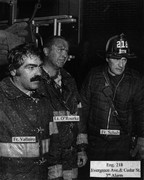

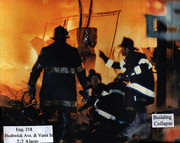
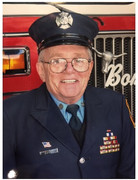
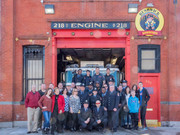
Engine 218 Medals:
JOHN E. MAHER FF. ENG. 218 JAN. 17, 1972 1973 JOHNSTON
JAMES F. KEENAGHAN FF. ENG. 218 DEC. 11, 1972 1973 WAGNER
Engine 218 LODDs:
FIREFIGHTER WILLIAM MAURER ENGINE 218 November 2, 1912
FF William Maurer, Engine 113's driver, died responding to a fire when he fell from steamer.

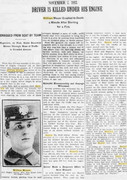
CAPTAIN WILLIAM L. CASEY ENGINE 218 February 9, 1955
Capt. William L. Casey, 15-year veteran, died as a result of injuries sustained while operating at a fire on February 1st.
FIREFIGHTER GEORGE P. LINNEMANN ENGINE 218 February 18, 1968 1968 - BROOKLYN, NY
FF George P. Linnemann, 25-year veteran, died as a result of injuries sustained while operating at a Brooklyn 4th alarm fire.
RIP. Never forget.
Engine 218 neighborhood:

https://en.wikipedia.org/wiki/Bushwick,_Brooklyn

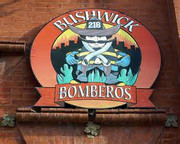
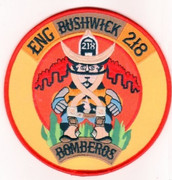
Engine 18 BFD organized 112 Seigel Street 1877
Engine 18 BFD new firehouse 650 Hart Street 1887
Engine 18 BFD became Engine 18 FDNY 1898
Engine 18 became Engine 118 1899
Engine 118 became Engine 218 1913
Engine 218 disbanded (July 2) 1975
Engine 218 reorganized (July 4) 1975
Engineer 7 BFD organized 112 Seigel Street 1885
Engineer 7 BFD moved 55 Morgan Street at Engine 37 BFD 1896
Engineer 7 BFD became Battalion 7 FDNY 1898
Battalion 7 moved to 650 Hart Street at Engine 18 1898
Battalion 7 became Battalion 27 1898
Battalion 27 disbanded 1906
Battalion 37 organized and operated at 650 Hart Street at Engine 118 (218) 1906-1949
Battalion 60 organized 650 Hart Street at Engine 218 1970
Battalion 60 disbanded 1975
Note: Battalion 60 was organized to respond to alarms only and had no administrative responsibilities. It could be relocated where needed.
Engine 18 BFD at 112 Seigel Street:




Note: Elm Street renamed Hart Street.
650 Hart Street:








Engine 218 1936 Mack pumper:

Engine 218 Mack CF pumper early 1970s:

Engine 218:







Engine 218:
https://www.youtube.com/watch?v=tsTjqRLhA3A
https://www.youtube.com/watch?v=lD57e8BlTSU
Engine 218 members:





Engine 218 Medals:
JOHN E. MAHER FF. ENG. 218 JAN. 17, 1972 1973 JOHNSTON
JAMES F. KEENAGHAN FF. ENG. 218 DEC. 11, 1972 1973 WAGNER
Engine 218 LODDs:
FIREFIGHTER WILLIAM MAURER ENGINE 218 November 2, 1912
FF William Maurer, Engine 113's driver, died responding to a fire when he fell from steamer.


CAPTAIN WILLIAM L. CASEY ENGINE 218 February 9, 1955
Capt. William L. Casey, 15-year veteran, died as a result of injuries sustained while operating at a fire on February 1st.
FIREFIGHTER GEORGE P. LINNEMANN ENGINE 218 February 18, 1968 1968 - BROOKLYN, NY
FF George P. Linnemann, 25-year veteran, died as a result of injuries sustained while operating at a Brooklyn 4th alarm fire.
RIP. Never forget.
Engine 218 neighborhood:

https://en.wikipedia.org/wiki/Bushwick,_Brooklyn



Bushwick - 1970s:
https://www.youtube.com/watch?v=R4PuIy0pf2A
https://www.youtube.com/watch?v=d1UKaV5VkoE
https://www.youtube.com/watch?v=NgnpbW-6zI8
Bushwick - 1980s:
https://www.youtube.com/watch?v=GYMzmCsyTN8
https://www.youtube.com/watch?v=9yBxdcOZunE
https://www.youtube.com/watch?v=sBwCixGoRCQ
Bushwick - 1990s:
https://www.youtube.com/watch?v=Li87Mw8m0A8
https://www.youtube.com/watch?v=R4PuIy0pf2A
https://www.youtube.com/watch?v=d1UKaV5VkoE
https://www.youtube.com/watch?v=NgnpbW-6zI8
Bushwick - 1980s:
https://www.youtube.com/watch?v=GYMzmCsyTN8
https://www.youtube.com/watch?v=9yBxdcOZunE
https://www.youtube.com/watch?v=sBwCixGoRCQ
Bushwick - 1990s:
https://www.youtube.com/watch?v=Li87Mw8m0A8
- Joined
- May 6, 2010
- Messages
- 17,485
^^^^^ Prior to BN*28 being organized at 271 (from BN*37-2 at 222) 218 was in BN*35....BN*60 rotated every third night from 1800 to 2400 hrs between BNs 35...44 & ?? acting as another Section (some great BCs & BN*FFs in the Unit) ...during the remaining hrs they were in Qtrs w/218 & responded at the Dispatchers discretion.
68jk09 said:^^^^^ Prior to BN*28 being organized at 271 (from BN*37-2 at 222) 218 was in BN*35....BN*60 rotated every third night from 1800 to 2400 hrs between BNs 35...44 & ?? acting as another Section (some great BCs & BN*FFs in the Unit) ...during the remaining hrs they were in Qtrs w/218 & responded at the Dispatchers discretion.
FDNY Battalions had very high response activity in the 1960s and 1970s.
In 1968, Bn 44-1 and Bn 44-2 responded to 11,598 combined runs.
In 1971, the NY Times reported that Bn 44 responded to over 10,000 runs. Bn 44 aide Seymour Schenker reported over the Department Radio, ?The 44 Battalion has just completed its 10,000th run? (to which the dispatcher replied) ? ?Congratulations Bn 44, now take in number 10,001!?. (http://watkinsst.com/wp-content/uploads/2014/12/battalion-44-history-complete1.pdf)
In 1971, 43 FDNY battalions responded to 3100 runs, many doing more than 5000 or 6000 runs.
In 1973, 46 FDNY battalions responded to 3100 runs or more, Bn 56 responded 7123 times.
It was not uncommon for dispatchers to ask on the radio - "Is there an available chief for a working fire?"
FDNY created second sections in several battalions:
Bn 3-2 E 94 1968-69 BX
Bn 12-2 L 14 1968-69 MN
Bn 14-2 E 60 1968-69 BX
Bn 18-2 E 45 1968-69 BX
Bn 37-2 E 222 1968-69 BK
Bn 39-2 E 236 1968-69 BK
Bn 44-2 E 231 1968-69 BK
FDNY created new battalions:
Bn 25 E 58 1969 MN
Bn 26 E 60 1969 MN
Bn 27 E 82 1969 BX
Bn 55 E 73 1969 BX
Bn 56 L 27 1969 BX
Bn 57 E 235 1969 BK
Bn 58 E 231 1969 BK
Bn 59 E 275 1970 QN
Bn 60 E 218 1970 BK (relocated nights where needed)
To reduce workloads, in the 1970s FDNY changed battalion locations, reassigned boxes, reduced units assigned for administration, introduced Adaptive Response, introduced Discretionary Response boxes and introduced ERS fire alarm boxes.
- Thanks Gman
Fireman's Hall - former firehouse - 155 Mercer Street Lower Manhattan

"If these walls could talk- there are many buildings that have been around since before the paid Fire Department of the City of New York was organized that are still being used today. Then, there are some, no longer firehouses but still hold it's history inside the 4 walls. 1 building in particular at 155 Mercer Street, still shows signs of what it once was, 'Fireman's Hall'.
Present day 155 Mercer Street is a clothing store with bright lights, but if you look beyond that, on the front facade, you can still see 'Fireman's Hall' carved into the building, spelling out it's rich history. January 6th, 1854, construction contracts were signed to build a new Fireman's Hall to replace the old building. A box was placed into the cornerstone containing the history of the New York Fire Department since 1816, a history of the old Fireman's Hall, a bible, a copy of the US Constitution & a score of other documents including copies of the local newspaper. The ground floor would house New York Hose Company 5 & Ladder Company 6 of the Volunteer Department. Each company is to have 15x90ft, which will be divided in 3 rooms. The front room for the apparatus, the center room for their meetings & the room in the rear for sitting & reading.
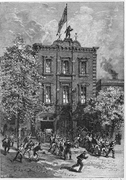
The 2nd floor would contain a large meeting room, 38x71ft for meetings of the representatives, engineers & foremen, & the Exempt Firemen's Association. The 3rd floor held an identical sized room used as a library & reading room & smaller rooms for the librarian & committees. The front of the building is to be Connecticut brownstone, cut in the best manner. The style of architecture is Italian, or composition of Greek & Roman details applied by the Italians to modern buildings. An over-the-top example of Victorian exuberance, Field & Correja's Fireman's Hall exploded with decoration. Fireman's Hall was carved above the central 2nd floor window. The pilasters flanking the centered entrance were adorned with "emblems of the fire department, such as hook & ladders, torches, axes, trumpets, etc & tops of these antaes are to be surmounted with a fire hydrant". The architects salvaged an old fireman statue from the old fireman's hall. "On the top of the cornice is to be a blocking course with 3 pedestals. The 2 side ones surmounted with a cluster of torches & the center one with the full size statue of a firemen-- the same one that has stood sentry so many years in front of the old hall." A tympanum above the entrance doors contained bas-relief carvings of Protection & Benevolence & on it's keystone was carved a full-sized fire helmet.
The volunteer fire companies were manned by locals called 'laddies.'. The companies gained a reputation as rowdy, boisterous gangs whose fire houses were essentially social clubs. Despite their elegant new surroundings, the men of New York Hose Company 5 & the Lafayette Hook & Ladder Company 6 were no different. When the Civil War erupted, Colonel Elmer E Ellsworth, a close friend of Abraham Lincoln, organized the 11th New York Volunteer Infantry Regiment known popularly as the Firemen's Regiment. The troops were in DC when insurgents attempted to burn down Willard's Hotel in DC on May 8th, 1861. Colonel Ellsworth, fusterated by a laddie's handling of the trumpet, snatched it. "With this he marshaled his forces". Less than 2 weeks later, on May 25th, it was reported that Colonel Ellsworth has been assasinated. His murder was fearfully & speedily revenged. His memory will be revered, his name respected & long after the rebellion shall have become a matter of history, his death will be regarded as martyrdom." That night, the board of Engineers & Foremen of the New York Fire Department met at Firemen's Hall to discuss participation in the Colonel's funeral.
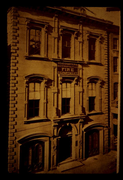
January 1865, there was a bill introduced in the State Senate to establish a paid professional Fire Department. A meeting of the Board of Representatives at Firemen's Hall resulted in a unanimous resolution to use "every honorable means to defeat the bill for a paid Fire Department". Their efforts failed. July 6th, 1865, the board met 'for the purpose of making a final close of their business". 2 weeks later the Commissioner of the new Metropolitan Fire Department met in Fireman's Hall to arrange for the transfer of property from the old volunteer companies to the new department. Fireman's Hall will be used as a Fire Department Headquarters. One of the 1st steps to modernize & consolidate the department was the installation of the 'Fire Alarm Telegraph' boxes, the predecessor of today's ERS boxes. The Central Station was located in Fireman's Hall.
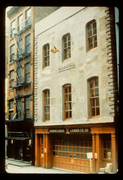
In 1887, Fire Department Headquarters moved to it's new building on West 67th Street. Fireman's Hall continued to operate as a firehouse. Ladder 20 organized March 30th 1889 here. Ladder 20-2 organized March 1st, 1900 until June 1905, then reorganized December 1905 until July 1939. Division 1 moved in January 30th 1894 until March 1, 1900. Division 2 was here from December 1914 until June 1917. Battalion 3 was here January 1894 on and off until 1922. Battalion 5 was here April 1959 until April 1974. Engine 13 moved in November 1948 until April 1974, when both Engine 13 & Ladder 20 both left for their new firehouse on Lafayette Street. At this time, the Victorian facade had been shaved flat, leaving only side quoins as any indication of the 1854 design. The fireman statue was salvaged."
- https://nycfirewire.net/entry/firemanshall

"If these walls could talk- there are many buildings that have been around since before the paid Fire Department of the City of New York was organized that are still being used today. Then, there are some, no longer firehouses but still hold it's history inside the 4 walls. 1 building in particular at 155 Mercer Street, still shows signs of what it once was, 'Fireman's Hall'.
Present day 155 Mercer Street is a clothing store with bright lights, but if you look beyond that, on the front facade, you can still see 'Fireman's Hall' carved into the building, spelling out it's rich history. January 6th, 1854, construction contracts were signed to build a new Fireman's Hall to replace the old building. A box was placed into the cornerstone containing the history of the New York Fire Department since 1816, a history of the old Fireman's Hall, a bible, a copy of the US Constitution & a score of other documents including copies of the local newspaper. The ground floor would house New York Hose Company 5 & Ladder Company 6 of the Volunteer Department. Each company is to have 15x90ft, which will be divided in 3 rooms. The front room for the apparatus, the center room for their meetings & the room in the rear for sitting & reading.

The 2nd floor would contain a large meeting room, 38x71ft for meetings of the representatives, engineers & foremen, & the Exempt Firemen's Association. The 3rd floor held an identical sized room used as a library & reading room & smaller rooms for the librarian & committees. The front of the building is to be Connecticut brownstone, cut in the best manner. The style of architecture is Italian, or composition of Greek & Roman details applied by the Italians to modern buildings. An over-the-top example of Victorian exuberance, Field & Correja's Fireman's Hall exploded with decoration. Fireman's Hall was carved above the central 2nd floor window. The pilasters flanking the centered entrance were adorned with "emblems of the fire department, such as hook & ladders, torches, axes, trumpets, etc & tops of these antaes are to be surmounted with a fire hydrant". The architects salvaged an old fireman statue from the old fireman's hall. "On the top of the cornice is to be a blocking course with 3 pedestals. The 2 side ones surmounted with a cluster of torches & the center one with the full size statue of a firemen-- the same one that has stood sentry so many years in front of the old hall." A tympanum above the entrance doors contained bas-relief carvings of Protection & Benevolence & on it's keystone was carved a full-sized fire helmet.
The volunteer fire companies were manned by locals called 'laddies.'. The companies gained a reputation as rowdy, boisterous gangs whose fire houses were essentially social clubs. Despite their elegant new surroundings, the men of New York Hose Company 5 & the Lafayette Hook & Ladder Company 6 were no different. When the Civil War erupted, Colonel Elmer E Ellsworth, a close friend of Abraham Lincoln, organized the 11th New York Volunteer Infantry Regiment known popularly as the Firemen's Regiment. The troops were in DC when insurgents attempted to burn down Willard's Hotel in DC on May 8th, 1861. Colonel Ellsworth, fusterated by a laddie's handling of the trumpet, snatched it. "With this he marshaled his forces". Less than 2 weeks later, on May 25th, it was reported that Colonel Ellsworth has been assasinated. His murder was fearfully & speedily revenged. His memory will be revered, his name respected & long after the rebellion shall have become a matter of history, his death will be regarded as martyrdom." That night, the board of Engineers & Foremen of the New York Fire Department met at Firemen's Hall to discuss participation in the Colonel's funeral.

January 1865, there was a bill introduced in the State Senate to establish a paid professional Fire Department. A meeting of the Board of Representatives at Firemen's Hall resulted in a unanimous resolution to use "every honorable means to defeat the bill for a paid Fire Department". Their efforts failed. July 6th, 1865, the board met 'for the purpose of making a final close of their business". 2 weeks later the Commissioner of the new Metropolitan Fire Department met in Fireman's Hall to arrange for the transfer of property from the old volunteer companies to the new department. Fireman's Hall will be used as a Fire Department Headquarters. One of the 1st steps to modernize & consolidate the department was the installation of the 'Fire Alarm Telegraph' boxes, the predecessor of today's ERS boxes. The Central Station was located in Fireman's Hall.

In 1887, Fire Department Headquarters moved to it's new building on West 67th Street. Fireman's Hall continued to operate as a firehouse. Ladder 20 organized March 30th 1889 here. Ladder 20-2 organized March 1st, 1900 until June 1905, then reorganized December 1905 until July 1939. Division 1 moved in January 30th 1894 until March 1, 1900. Division 2 was here from December 1914 until June 1917. Battalion 3 was here January 1894 on and off until 1922. Battalion 5 was here April 1959 until April 1974. Engine 13 moved in November 1948 until April 1974, when both Engine 13 & Ladder 20 both left for their new firehouse on Lafayette Street. At this time, the Victorian facade had been shaved flat, leaving only side quoins as any indication of the 1854 design. The fireman statue was salvaged."
- https://nycfirewire.net/entry/firemanshall
68jk09 said:^^^^^^^ There was a photo in the Chicago Tribune of a Community Protest outside 218 during the "supposed fiscal crisis" in 1975 when they were threatened with closing...not sure if the photo was on here or ?
1975 Engine 218 planned closure:
NEW YORK DAILY NEWS Friday, November 8, 2002, 12:00 AM
"At 12:01 a.m., the order came over emergency squawk boxes - 2,127 firefighters would be laid off by midnight. The city's Bravest protested by calling out sick at 10 times the normal rate. And when the ghettos began to burn, 14 firefighters at Engine Co. 218 in Bushwick, Brooklyn, could not respond. They were being held hostage by a neighborhood mob. "We weren't unhappy about it," said retired Lt. Eugene Welischar, whose men were held during the first three days of July 1975. "The neighborhood wanted to save the firehouse. We agreed with them.
" It worked. Twenty-five other firehouses were closed by the city in the 1970s fiscal crisis. But the city spared Engine 218 to win the release of the crew. With another round of FDNY cuts on the way, community activists are readying for battle again, and firefighters are quietly talking about sickouts. A top official said that if engine companies are closed, the city is "almost guaranteed" to come after the ones it did before. Engine companies that share houses with ladder companies are the most likely targets. When City Hall was looking to close firehouses in 1991, it relied on a computer to determine which companies could be shut. Engine Co. 218 was on the list. So was Engine 212 in Williamsburg, Brooklyn - the scene of another protest in 1975. Angry neighbors lived in Engine 212's firehouse for 16 months to force the city to reverse its decision to shutter it. "We'd be ready and willing to fight again," said Albina Jackanin, a member of The People's Firehouse, a group that grew out of 1975 protest. This time around, the nonprofit organization believes another nearby firehouse - Engine 229 - is in jeopardy. "If they don't remember what a bad idea it was to close firehouses before, the community is ready to remind them," said Daniel Rivera, executive director of The People's Firehouse."
- http://www.nydailynews.com/archives/news/75-vets-set-fight-article-1.498182
68jk09 said:^^^^^^^ There was a photo in the Chicago Tribune of a Community Protest outside 218 during the "supposed fiscal crisis" in 1975 when they were threatened with closing...not sure if the photo was on here or ?
Engine 218 - July 4, 1975
"Fire Aide Taken as Hostage by Crowd" NY Times By DAVID BIRD JULY 4, 1975
An assistant Fire Department commissioner went out yesterday to plead with angry residents of an area of Brooklyn's Bushwick section for the release of the 14 firemen they were holding hostage in protest against the shutting down of their neighborhood firehouse. Instead of winning their release, he succeeded only in being taken hostage himself. As many as 500 residents in the rundown area around Engine Company 218 at 650 Hart Street, had been blockading the front door of the century‐old firehouse since Monday, refusing to allow firemen to leave or equipment to he removed.
Return to Active Duty
The assistant commissioner, Vincent Collymore, went to the firehouse yesterday to remedy the situation. After conferring by telephone with Fire Commissioner John T. O'Hagan, he even gave the residents handwritten letter on Fire Department stationery promising help. The letter read: ?Fire Commissioner John T. O'Hagan states that when the first monies are received that Engine Company 218 will be the first firehouse to he put back on active duty.? Twenty‐give other firehouses were also closed in the city's budget squeeze. The letter also said that Mr. Collymore would go personally with two members of the community to talk to Commissioner O'Hagan and then Mr. Collymore would return with the two to the firehouse.
Continue reading the main story
After Mr. Collymore returned to the firehouse, Commissioner O'Hagan said late yesterday afternoon that the restoration of Engine Company 218 ?is our first priority.?
But he said no force would be used to remove the firemen. ?There's enough friction in the city now,? he said. Just before 6 P.M. yesterday Mr. Collymore was called to the telephone in the firehouse. After talking on the phone he came out to announce to the crowd ??? ?on approval of City Hall, Engine Company 218 will be restored to active duty at 0900 tomorrow.?
There was wild cheering in the street. The civil defense siren was touched off atop the firehouse and someone came down the street blowing a bugle. But the blockade continued.
A spokesmen for the protesters said the hostages would be let out at 9 A.M., when the firehouse was actually returned to active duty."
- Joined
- Mar 8, 2007
- Messages
- 5,392
You left out Bn's 25 & 26 that were formerly Bn's 12-2 & 14-2, respectively.mack said:68jk09 said:^^^^^ Prior to BN*28 being organized at 271 (from BN*37-2 at 222) 218 was in BN*35....BN*60 rotated every third night from 1800 to 2400 hrs between BNs 35...44 & ?? acting as another Section (some great BCs & BN*FFs in the Unit) ...during the remaining hrs they were in Qtrs w/218 & responded at the Dispatchers discretion.
FDNY Battalions had very high response activity in the 1960s and 1970s.
In 1968, Bn 44-1 and Bn 44-2 responded to 11,598 combined runs.
In 1971, the NY Times reported that Bn 44 responded to over 10,000 runs. Bn 44 aide Seymour Schenker reported over the Department Radio, ?The 44 Battalion has just completed its 10,000th run? (to which the dispatcher replied) ? ?Congratulations Bn 44, now take in number 10,001!?. (http://watkinsst.com/wp-content/uploads/2014/12/battalion-44-history-complete1.pdf)
In 1971, 43 FDNY battalions responded to 3100 runs, many doing more than 5000 or 6000 runs.
In 1973, 46 FDNY battalions responded to 3100 runs or more, Bn 56 responded 7123 times.
It was not uncommon for dispatchers to ask on the radio - "Is there an available chief for a working fire?"
FDNY created second sections in several battalions:
Bn 3-2 E 94 1968-69 BX
Bn 12-2 L 14 1968-69 MN
Bn 14-2 E 60 1968-69 BX
Bn 18-2 E 45 1968-69 BX
Bn 37-2 E 222 1968-69 BK
Bn 39-2 E 236 1968-69 BK
Bn 44-2 E 231 1968-69 BK
FDNY created new battalions:
Bn 27 E 82 1969 BX
Bn 55 E 73 1969 BX
Bn 56 L 27 1969 BX
Bn 57 E 235 1969 BK
Bn 58 E 231 1969 BK
Bn 59 E 275 1970 QN
Bn 60 E 218 1970 BK (relocated nights where needed)
To reduce workloads, in the 1970s FDNY changed battalion locations, reassigned boxes, reduced units assigned for administration, introduced Adaptive Response, introduced Discretionary Response boxes and introduced ERS fire alarm boxes.
- Joined
- Sep 25, 2013
- Messages
- 1,000
guitarman314 said:You left out Bn's 25 & 26 that were formerly Bn's 12-2 & 14-2, respectively.mack said:68jk09 said:^^^^^ Prior to BN*28 being organized at 271 (from BN*37-2 at 222) 218 was in BN*35....BN*60 rotated every third night from 1800 to 2400 hrs between BNs 35...44 & ?? acting as another Section (some great BCs & BN*FFs in the Unit) ...during the remaining hrs they were in Qtrs w/218 & responded at the Dispatchers discretion.
FDNY Battalions had very high response activity in the 1960s and 1970s.
In 1968, Bn 44-1 and Bn 44-2 responded to 11,598 combined runs.
In 1971, the NY Times reported that Bn 44 responded to over 10,000 runs. Bn 44 aide Seymour Schenker reported over the Department Radio, ?The 44 Battalion has just completed its 10,000th run? (to which the dispatcher replied) ? ?Congratulations Bn 44, now take in number 10,001!?. (http://watkinsst.com/wp-content/uploads/2014/12/battalion-44-history-complete1.pdf)
In 1971, 43 FDNY battalions responded to 3100 runs, many doing more than 5000 or 6000 runs.
In 1973, 46 FDNY battalions responded to 3100 runs or more, Bn 56 responded 7123 times.
It was not uncommon for dispatchers to ask on the radio - "Is there an available chief for a working fire?"
FDNY created second sections in several battalions:
Bn 3-2 E 94 1968-69 BX
Bn 12-2 L 14 1968-69 MN
Bn 14-2 E 60 1968-69 BX
Bn 18-2 E 45 1968-69 BX
Bn 37-2 E 222 1968-69 BK
Bn 39-2 E 236 1968-69 BK
Bn 44-2 E 231 1968-69 BK
FDNY created new battalions:
Bn 27 E 82 1969 BX
Bn 55 E 73 1969 BX
Bn 56 L 27 1969 BX
Bn 57 E 235 1969 BK
Bn 58 E 231 1969 BK
Bn 59 E 275 1970 QN
Bn 60 E 218 1970 BK (relocated nights where needed)
To reduce workloads, in the 1970s FDNY changed battalion locations, reassigned boxes, reduced units assigned for administration, introduced Adaptive Response, introduced Discretionary Response boxes and introduced ERS fire alarm boxes.
Battalion 3-2 1968 to 1969 became Battalion 27
Battalion 12-2 1968 to 1969 became Battalion 25
Battalion 14-2 1968 to 1969 became Battalion 26
Battalion 18-2 1965 to 1967 became Battalion 56
Battalion 44-2 1965 to 1969 became Battalion 58
Battalion 37-2 1968 to 1969 became Battalion 28
Battalion 39-2 1968 to 1969 became Battalion 29
Battalion 55 1969 to 1988
Battalion 57 1969
Battalion 59 1970 to 1989
Battalion 60 1970 to 1975
Battalions 18-2 and 44-2 were organized earlier than the others, in 1965
Bn 25 E 58 1969 to 1989 MN from Battalion 12-2
Bn 26 E 60 1969 MN from Battalion 14-2
Bn 27 E 82 1969 BX from Battalion 3-2
Bn 28 E 222 1969 BK from Battalion 37-2
Bn 29 E 236 1969 to 1975 BK from Battalion 39-2
Bn 55 E 73 1969 to 1988 BX
Bn 56 L 27 1969 to 1989 BX from Battalion 18-2
Bn 57 E 235 1969 BK
Bn 58 E 231 1969 BK from Battalion 44-2
Bn 59 E 275 1970 to 1989 QN
Bn 60 E 218 1970 to 1975 BK (relocated nights where needed)
Battalions 25, 29, 55, 56, 59, and 60 have been disbanded
- Joined
- May 6, 2010
- Messages
- 17,485
^^^^^^BN*59 was originally in 275 to help BNs*50 & 54.....after they left 275 BN*51 was moved from 294 East to 308......& in 1984 when the Springfield Blvd FH was built & 326/160 were organized there BN*53 was moved South from 306 to 326 to help BN*54..... BN*59 was later at 319 with the idea of helping BNs*28 & 46 but this did not really do much as they were in the slower area of both BNs.....at the height of BN*46s high running years the Job took a number of the 46s Boxes & gave them to BN*52.
I believe the comment from the 44 Aide, Seymore Schenker, was directed to TL-120. 120 was the Only individual company to do over 10,000 runs in 1 year, in 1971. There were many 2nd sections But, only 1 company has that distinction.
Capt JC (ret)
FDNY
TL-120
Brownsville, Brooklyn
Capt JC (ret)
FDNY
TL-120
Brownsville, Brooklyn
jkal said:I believe the comment from the 44 Aide, Seymore Schenker, was directed to TL-120. 120 was the Only individual company to do over 10,000 runs in 1 year, in 1971. There were many 2nd sections But, only 1 company has that distinction.
Capt JC (ret)
TL-120 FDNY
Brownsville, brooklyn
Capt - You are correct. TL 120 had 10,989 runs in 1971.
- Joined
- Mar 8, 2007
- Messages
- 5,392
Engine 27 History from NYC Fire Wire: https://nycfirewire.net/entry/engine27
turk132 said:I think BN25 was in with E91 not E58
turk132 - you are right - Bn 25 was located from 1969 through 1989 at Engine 91 but it looks like it was initially re-organized at Engine 58 in July 1969 for a short period of time and then relocated to Engine 91 a few months later in December 1969.
Engine 231/Ladder 120/Battalion 44 firehouse 107 Watkins Street Brownsville, Brooklyn Division 15, Battalion 44 "The Tradition Continues"
Engine 31 BFD organized 1772 Pitkin Ave 1892
Engine 31 BFD became Engine 31 FDNY 1898
Engine 31 became Engine 131 1899
Engine 131 new firehouse 107 Watkins St w/Bn 34 1905
Engine 131 became Engine 231 1913
Engine 231 moved to 423 Ralph Ave at Engine 227 1995
Engine 231 moved to 107 Watkins St w/Ladder 120/Bn 44 1996
Ladder 70 organized 107 Watkins St at Engine 131 1905
Ladder 70 became Ladder 120 1913
Ladder 120 moved to 855 Howard St at Engine 283 1995
Ladder 120 moved to 107 Watkins St w/E 231/Bn44 1996
Battalion 34 organized 107 Watkins St at Engine 131 1905
Battalion 34 became Battalion 44 1913
Battalion 44 moved to 855 Howard St at Engine 283 1995
Battalion 44 moved to 107 Watkins St w/E 231/L 120 1996
Squad 4 organized 107 Watkins St at Engine 231 1955
Squad 4 moved to 214 Bristol Street at Engine 283 1956
Battalion 44-2 organized 107 Watkins St at Engine 231 1965
Battalion 44-2 became Battalion 58 1969
Battalion 58 moved to 5105 Snyder Ave at Engine 310 1971
Battalion 58 moved to 1361 Rockaway parkway at Engine 257 1995
Engine 232 organized at 107 Watkins St at Engine 231 1966
Engine 232 moved to 266 Rockaway Ave "Tinhouse" w/TCU 732 1971
107 Watkins Street - early 1900's:

Early Battalion 44:

Engine 231/Ladder 120:


Ladder 120 - 1920's:

Ladder 120 - 1924:

1928:

1933:

Ladder 120 - 1930s:

Watkins Street looking towards Pitkin - 1940's:

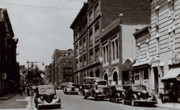
Ladder 120 - 1953:

Squad 4 - 1955-1956:
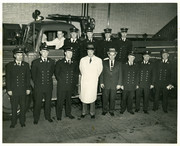
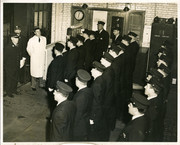

Housewatch (dates unknown):



Ladder 120 - 1960s:

1967:

1970's

Ladder 120 - 1995:

107 Watkins Street current:


Homepage:
http://watkinsst.com/
Centennial Celebration 2006:
https://www.youtube.com/watch?v=UQvvMLgA800#
Engine 231/Ladder 120/Battalion 44:
https://www.youtube.com/watch?v=2pzMMyMWa18
https://www.youtube.com/watch?v=ta3_XCJh6P8#ws
https://www.youtube.com/watch?v=66JZQZIq4kM#
Battalion 44:
https://www.youtube.com/watch?v=lcZNpkpP4vk#
https://www.youtube.com/watch?v=0xURXoSAoR8#ws
Engine 31 BFD organized 1772 Pitkin Ave 1892
Engine 31 BFD became Engine 31 FDNY 1898
Engine 31 became Engine 131 1899
Engine 131 new firehouse 107 Watkins St w/Bn 34 1905
Engine 131 became Engine 231 1913
Engine 231 moved to 423 Ralph Ave at Engine 227 1995
Engine 231 moved to 107 Watkins St w/Ladder 120/Bn 44 1996
Ladder 70 organized 107 Watkins St at Engine 131 1905
Ladder 70 became Ladder 120 1913
Ladder 120 moved to 855 Howard St at Engine 283 1995
Ladder 120 moved to 107 Watkins St w/E 231/Bn44 1996
Battalion 34 organized 107 Watkins St at Engine 131 1905
Battalion 34 became Battalion 44 1913
Battalion 44 moved to 855 Howard St at Engine 283 1995
Battalion 44 moved to 107 Watkins St w/E 231/L 120 1996
Squad 4 organized 107 Watkins St at Engine 231 1955
Squad 4 moved to 214 Bristol Street at Engine 283 1956
Battalion 44-2 organized 107 Watkins St at Engine 231 1965
Battalion 44-2 became Battalion 58 1969
Battalion 58 moved to 5105 Snyder Ave at Engine 310 1971
Battalion 58 moved to 1361 Rockaway parkway at Engine 257 1995
Engine 232 organized at 107 Watkins St at Engine 231 1966
Engine 232 moved to 266 Rockaway Ave "Tinhouse" w/TCU 732 1971
107 Watkins Street - early 1900's:

Early Battalion 44:

Engine 231/Ladder 120:


Ladder 120 - 1920's:

Ladder 120 - 1924:

1928:

1933:

Ladder 120 - 1930s:

Watkins Street looking towards Pitkin - 1940's:


Ladder 120 - 1953:

Squad 4 - 1955-1956:



Housewatch (dates unknown):



Ladder 120 - 1960s:

1967:

1970's

Ladder 120 - 1995:

107 Watkins Street current:


Homepage:
http://watkinsst.com/
Centennial Celebration 2006:
https://www.youtube.com/watch?v=UQvvMLgA800#
Engine 231/Ladder 120/Battalion 44:
https://www.youtube.com/watch?v=2pzMMyMWa18
https://www.youtube.com/watch?v=ta3_XCJh6P8#ws
https://www.youtube.com/watch?v=66JZQZIq4kM#
Battalion 44:
https://www.youtube.com/watch?v=lcZNpkpP4vk#
https://www.youtube.com/watch?v=0xURXoSAoR8#ws

